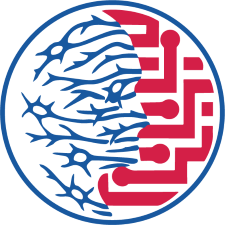|
Autonomous Machine Learning (AML) Section
Autonomous Machine Learning (AML) SIG was the first SIG to be elevated to a Section within INNS. Being a Section has the following benefits:
Founding Section members include Prof. Nistor Grozavu of Institut Galilée, Paris 13 University, France, and Prof. Nils T Siebel of HTW University of Applied Sciences Berlin, Germany. Contact Asim Roy ([email protected]) if you want to volunteer for the AML Section. We hope more INNS members will join the AML Section and be part of the worldwide effort to create widely deployable learning systems. Motivation for AML SectionMuch of the justification for creating this SIG (now a Section) is derived from the report of a US National Science Foundation (NSF) workshop in July 2007 on “Future Challenges for the Science and Engineering of Learning.” Here is the summary of the “Open Questions in Both Biological and Machine Learning” from the workshop (http://www.cnl.salk.edu/Media/NSFWorkshopReport.v4.pdf). “Biological learners have the ability to learn autonomously, in an ever changing and uncertain world. This property includes the ability to generate their own supervision, select the most informative training samples, produce their own loss function, and evaluate their own performance. More importantly, it appears that biological learners can effectively produce appropriate internal representations for composable percepts -- a kind of organizational scaffold - - as part of the learning process. By contrast, virtually all current approaches to machine learning typically require a human supervisor to design the learning architecture, select the training examples, design the form of the representation of the training examples, choose the learning algorithm, set the learning parameters, decide when to stop learning, and choose the way in which the performance of the learning algorithm is evaluated. This strong dependence on human supervision is greatly retarding the development and ubiquitous deployment autonomous artificial learning systems. Although we are beginning to understand some of the learning systems used by brains, many aspects of autonomous learning have not yet been identified.” We believe INNS and the neural network community at large has a special obligation to step up to this challenge of creating autonomous learning systems that do not depend on human supervision. INNS approved the formation of AML SIG in April 2009 and our membership has grown since then. Our current mailing list has more than 225 members worldwide and is growing. AML Section ObjectivesThe objectives of this Section are to:
We hope more INNS members will join the AML Section this year and be part of the worldwide effort to create widely deployable learning systems. AML Section WebsiteWe currently have a website that is under construction. We would like to expand this website to post information about various research activities of our members, job openings, papers, and other special events. AML Section Mail-serverTo join the mail-server for the AML SIG (now a Section) and its various specialized discussion lists, please contact Asim Roy at [email protected]. Messages are moderated to keep the number of messages and their relevancy to the list subject in check. AML Section Discussion GroupsPast discussions have included topics such as newly discovered concept cells in the human brain and participants included Prof. Itzhak Fried of UCLA (University of California, Los Angeles, USA), Prof. Christof Koch of Caltech (California Institute of Technology, Pasadena, CA, USA) and Dr. Moran Cerf from the UCLA/Caltech group. AML Section discussions have been very productive in clarifying theoretical issues and ideas. So we hope to continue discussions of this nature within our mailing list. We try to bring the best experts in the field to join these discussions. This can be of tremendous help to the challenging research we are engaged in. AML Section CommitteePlease contact Asim Roy ([email protected]) if you are interested in volunteering. We hope more INNS members will join the AML Section this year and be part of the worldwide effort to create widely deployable learning systems. AML Sessions, Panels and Workshops at ConferencesWe organized seven special sessions and two panel discussions in the Autonomous Machine Learning track at WCCI 2010 in Barcelona. Also, we organized seven special sessions, two panel discussions and a workshop in the AML track at IJCNN2011 in San Jose. Join the Autonomous Machine Learning Section TODAY! AML Section Membership Application
|


